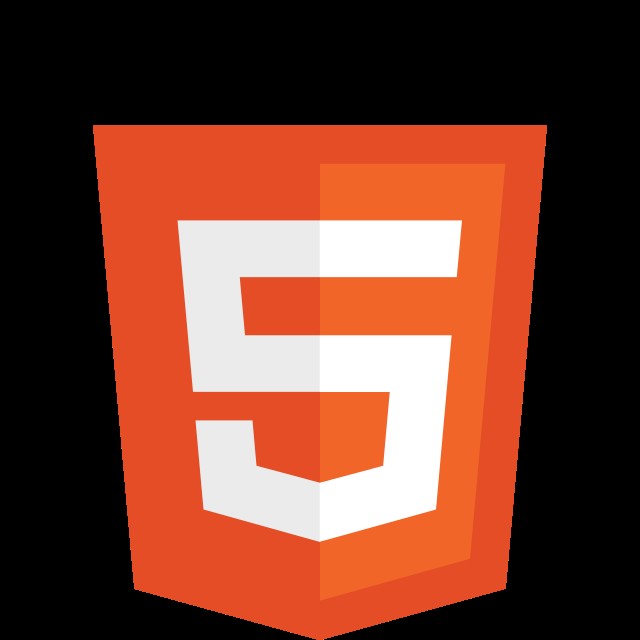Embarking on the coding journey can feel like stepping into a vast, uncharted territory. With a multitude of programming languages available, aspiring coders often find themselves wondering: “What Is The Easiest Programming Language To Learn?”. It’s a valid and crucial question, as choosing the right starting point can significantly impact your learning experience and future success. While the perception of “easy” is subjective and varies from person to person, some languages are generally considered more beginner-friendly than others due to their syntax, readability, and the availability of learning resources. This guide will explore some of the most approachable programming languages for beginners, ranking them from easiest to more complex, and offering insights into which language might be the perfect launchpad for your coding career.
Programming Languages Ranked from Easiest to More Challenging
The world of programming languages is diverse, ranging from those with straightforward syntax designed for ease of use to those that demand a deeper understanding of computer architecture. Languages like HTML, JavaScript, and Python often top the lists of easiest languages to learn, thanks to their clear syntax and extensive libraries that simplify complex tasks. These languages are popular choices for beginners and seasoned developers alike. On the other end of the spectrum, languages such as C++, Assembly Language, and esoteric languages like Malbolge are known for their steep learning curves. These languages might offer greater control and efficiency in specific contexts, but their complexity can be daunting for newcomers. Let’s delve into a ranked list, moving from the easiest to the more challenging options:
If you’re feeling overwhelmed about where to begin your coding adventure, remember that JavaScript is widely recognized as one of the most accessible and highly sought-after programming languages today. Its beginner-friendly nature, widespread application in web development, and role as a gateway to full-stack expertise make it an excellent choice for newcomers.
To support your first steps in coding, we’ve developed a free JavaScript ebook that covers fundamental concepts, essential principles, and practical applications. Whether you’re a complete novice or looking to refresh your knowledge, this ebook is designed to be your ideal companion! 👉 [Download Your Free JavaScript Ebook]
1. HTML
HTML, or Hypertext Markup Language, isn’t strictly a programming language; it’s a markup language. However, it’s often the first step for aspiring coders and a strong contender for the easiest programming language to learn for beginners. HTML is the foundation of web pages, defining the structure and content displayed in web browsers. It uses tags to structure text, images, and other elements, essentially creating the skeleton of a website.
Applications of HTML
- Building the structure of web pages
- Defining the layout of web content
- Embedding multimedia elements (images, videos, audio)
- Creating forms for user interaction
Why HTML is Easy
- Simple, intuitive syntax based on tags
- Easy to visualize results in a web browser
- Immediate feedback and quick learning curve for basic concepts
- Abundant online resources and tutorials for beginners
Explore a basic “Hello World” example in HTML
2. JavaScript
JavaScript is a dynamic and versatile programming language primarily used for front-end web development to create interactive and engaging website elements. It is widely regarded as one of the easiest programming languages for beginners to pick up, especially when combined with HTML and CSS. JavaScript allows developers to add interactivity, handle user actions, and create dynamic content within web browsers. Furthermore, with the rise of Node.js, JavaScript’s reach extends to server-side development, making it a powerful language for full-stack development. It’s a cornerstone of modern web development and a strong candidate for the easiest programming language to learn for web interactivity.
Applications of JavaScript
- Developing interactive front-end web applications
- Building dynamic single-page applications
- Creating browser-based games
- Server-side development with Node.js
- Mobile app development with frameworks like React Native
Why JavaScript is Easy
- Runs directly in web browsers, providing instant feedback
- Large and active community offering extensive support and resources
- Relatively forgiving syntax compared to some languages
- Huge demand in the job market, making it a practical skill to learn
- Strong foundation for learning other programming concepts
See a simple “Hello World” program in JavaScript
3. Python
Python is a high-level, general-purpose programming language renowned for its readability and beginner-friendliness. Often cited as the easiest programming language to learn first, Python’s clear syntax, resembling English, and extensive standard library make it exceptionally accessible. It’s a versatile language used across a wide range of applications, from web development and data science to machine learning and scripting. Python’s popularity in education and industry alike solidifies its position as an excellent choice for those starting their coding journey.
Applications of Python
- Data science and data analysis
- Machine learning and artificial intelligence
- Web development (frameworks like Django and Flask)
- Scripting and automation
- Scientific computing and research
- Education and introductory programming courses
Why Python is Easy
- Highly readable syntax with minimal punctuation
- Large standard library with modules for almost any task
- Strong community support and abundant learning resources
- Dynamically typed, reducing complexity for beginners
- Used in high-demand fields, offering strong career prospects
Find a basic “Hello World” program in Python.
4. Ruby
Ruby is a dynamic, open-source programming language with a focus on simplicity and programmer productivity. It’s designed to be human-friendly and emphasizes elegant code that is easy to read and write. Ruby is often considered among the easiest programming languages to learn due to its expressive syntax and the popular Ruby on Rails framework, which simplifies web development. Its philosophy of “convention over configuration” helps beginners get started quickly and build functional applications with less code.
Applications of Ruby
- Web development with Ruby on Rails
- Backend development for web applications
- Prototyping and rapid application development
- Web scraping and crawling
- DevOps and automation scripting
Why Ruby is Easy
- Highly readable and expressive syntax
- Strong emphasis on programmer happiness and ease of use
- Ruby on Rails framework accelerates web development
- Active and supportive community, especially for beginners
- Open-source and flexible, encouraging experimentation
Explore a basic “Hello World” program in Ruby
5. Java
Java is a widely used, object-oriented programming language known for its platform independence and robustness. While it might be slightly more complex than Python or JavaScript for absolute beginners, Java is still considered among the easier programming languages to learn, especially for those with some programming concepts already in mind. Its “Write Once, Run Anywhere” philosophy and extensive ecosystem make it a popular choice for enterprise applications, Android development, and large-scale systems.
Applications of Java
- Enterprise application development
- Android mobile app development
- Big Data technologies (Hadoop, Spark)
- Desktop application development
- Game development (especially Android games)
Why Java is Moderately Easy
- Object-oriented programming concepts are well-structured
- Large community and extensive documentation
- Platform independence allows code to run on different operating systems
- Strong career opportunities in enterprise and mobile development
- Relatively clear syntax compared to lower-level languages
Check out a basic “Hello World” program in Java.
6. C++
C++ is a powerful, general-purpose programming language that extends the C language with object-oriented features. It’s a mid-level language, offering both high-level abstractions and low-level memory manipulation capabilities. C++ is considered more challenging than the languages listed above, moving into the territory of harder programming languages to learn for beginners. Its complex syntax and memory management requirements can be initially daunting, but its performance and control make it indispensable for system programming, game development, and high-performance applications.
Applications of C++
- Operating systems (Windows, Linux kernels)
- Game development (high-performance games)
- Game engines (Unreal Engine)
- System/application software
- High-performance computing
Why C++ is Tougher
- More complex syntax compared to Python or JavaScript
- Manual memory management (pointers, memory allocation) requires careful attention
- Steeper learning curve for beginners
- Can be more error-prone if memory management is not handled correctly
- Requires a deeper understanding of computer architecture
Here’s how to write a C++ Hello World program.
7. Assembly Language
Assembly language is a low-level programming language that is closely tied to the hardware architecture of a computer. It’s considered one of the harder programming languages to learn because it requires a deep understanding of computer hardware and works directly with the processor’s instruction set. Assembly language is less abstract than high-level languages, and code is often longer and more complex to write and understand. It’s primarily used for tasks that require direct hardware control and maximum performance.
Applications of Assembly Languages
- Hardware driver development
- Embedded systems programming
- Reverse engineering
- Optimizing performance-critical sections of code
- Operating system kernels (in conjunction with higher-level languages)
Why Assembly Languages Are Tough
- Very low-level, requiring detailed hardware knowledge
- Syntax is specific to each processor architecture
- Code is less portable compared to high-level languages
- Debugging can be challenging
- Steep learning curve for beginners without computer architecture background
Here’s a Hello World program in Assembly language.
8. Prolog
Prolog, short for “Programming in Logic,” is a declarative programming language primarily associated with artificial intelligence and computational linguistics. It’s one of the harder programming languages to learn because it uses a different programming paradigm compared to imperative languages like Python or Java. Prolog focuses on defining facts and rules and then querying those rules to solve problems. This logic-based approach can be conceptually challenging for programmers accustomed to procedural or object-oriented thinking.
Applications of Prolog
- Artificial intelligence applications
- Expert systems
- Natural Language Processing (NLP)
- Automated reasoning
- Theorem proving
- Logic puzzles and games
Why Prolog is Tough
- Declarative programming paradigm is different from common imperative styles
- Requires a shift in thinking towards logic and rule-based programming
- Syntax and concepts can be unfamiliar to beginners
- Fewer readily available online resources compared to more popular languages
- Debugging logic-based programs can be more abstract
Check out some of the Prolog Programs.
9. Haskell
Haskell is a purely functional programming language known for its strong type system and mathematical foundations based on lambda calculus. It’s considered one of the harder programming languages to learn, particularly for programmers coming from imperative backgrounds. Haskell’s functional paradigm emphasizes immutability, recursion, and higher-order functions, which can be conceptually challenging for beginners. Its focus on mathematical purity and abstraction makes it powerful for certain domains but less approachable for general-purpose programming compared to languages like Python.
Applications of Haskell
- Academic research and development
- Financial modeling and analysis
- Compiler development
- Formal verification
- Concurrent and parallel programming
- Data processing and analysis
Why Haskell is Tough
- Purely functional paradigm is different from most mainstream languages
- Steep learning curve for functional programming concepts
- Strong type system can be initially restrictive
- Abstract syntax and terminology can be daunting
- Error messages can be less beginner-friendly
Check out an example of the Hello World Program in Haskell
10. Malbolge
Malbolge is an esoteric programming language specifically designed to be exceptionally difficult to program in. It’s widely considered the hardest programming language to learn and use, even for experienced programmers. Malbolge’s syntax is intentionally obscure and self-modifying, making it incredibly challenging to write even simple programs. It was created more as a theoretical challenge than for practical use.
Applications of Malbolge
- Primarily a theoretical challenge in computer science
- Demonstrating the limits of programming difficulty
- Not intended for practical software development
Why Malbolge is Extremely Tough
- Intentionally designed to be as difficult as possible
- Obscure and self-modifying syntax is almost incomprehensible
- Extremely limited and cryptic documentation
- Very few resources or community support
- Writing even basic programs is exceptionally challenging
Here’s a Hello World Program in Malbolge.
Which Programming Language Should You Learn First?
Choosing your first programming language can seem like a daunting task. While there are countless [coding boot camps, online tech courses, videos, books, and websites to learn coding](https://www.example.com – replace with a relevant link to learns.edu.vn resources once available), considering these factors can guide your decision:
1. Your Goals and Intentions
Before diving into a language, define your goals. What do you want to achieve with coding? Are you interested in web development, data analysis, game creation, or something else? Understanding your intentions will help you narrow down your choices. If your aim is simply to learn a new skill for personal growth, starting with an easier language can build momentum and confidence. For specific career aspirations, research the languages most in demand in your desired field.
2. Intended Use Cases
Each programming language excels in different domains. Consider the use cases that align with your interests. For web development, HTML, CSS, and JavaScript are essential. Python is dominant in data science and machine learning. Java is prevalent in enterprise applications and Android development. Matching your language choice to your intended projects will make learning more relevant and engaging.
3. Perceived Difficulty Level
As discussed earlier, programming languages vary in difficulty. Acknowledge the difficulty level and be honest about your comfort zone as a beginner. Starting with one of the easiest programming languages can provide a smoother learning curve, build foundational concepts, and prevent early discouragement. You can always progress to more complex languages as you gain experience.
4. Available Learning Resources and Community Support
The availability of quality learning resources and a supportive community is crucial, especially for beginners. Opt for languages with abundant tutorials, documentation, online courses, and active online communities. A strong community provides help when you get stuck, offers inspiration, and keeps you motivated throughout your learning journey.
Final Words
Learning a programming language is a valuable skill in today’s tech-driven world. It opens doors to new career opportunities, enhances problem-solving abilities, and empowers you to create innovative solutions. While the journey may have its challenges, starting with the easiest programming language to learn can make the process more enjoyable and accessible.
Remember, choosing the right language to learn first is just the beginning. The most important aspect is your dedication to learning and practice. Embrace the process, stay curious, and you’ll be well on your way to mastering the world of code.
If you’re serious about a career in software development, expanding your skillset to Full Stack Development is highly advantageous. It equips you with the knowledge to handle both front-end and back-end aspects of web applications, making you a more versatile and sought-after developer.
Explore our free Full Stack Development email course to learn the essentials of front-end and back-end technologies, databases, and deployment strategies. Gain practical skills and transform your coding abilities into real-world applications. No fluff, just hands-on learning delivered directly to your inbox!
👉 [Sign Up for Free]
Easiest Programming Language to Learn: FAQs
1. Which are generally considered the easiest programming languages to learn?
Languages often cited as the easiest programming languages to learn for beginners include: HTML, CSS, JavaScript, Python, Ruby, and C#. These languages typically feature simpler syntax, are widely used, and have robust learning communities, providing ample support for new learners.
2. What’s the easiest programming language to start coding with?
For absolute beginners, HTML, CSS, and JavaScript are exceptionally approachable starting points. They are visually oriented, provide immediate feedback in a web browser, and are fundamental for web development. Once you’ve grasped the basics with these, you can confidently move on to other languages and more advanced concepts.
3. What is the most challenging coding language to learn?
Esoteric programming languages like Malbolge, Cow, and Whitespace are deliberately designed to be extremely difficult. They serve more as theoretical exercises or jokes than practical tools. Among mainstream languages, Assembly Language and Haskell are often considered among the hardest due to their low-level nature or abstract programming paradigms.
4. Which coding language should I learn as my first language?
Python is widely recommended as a first programming language due to its readability, versatility, and extensive use in various fields. JavaScript is another excellent choice, particularly if you are interested in web development. HTML and CSS are also essential starting points for web-focused learners.
5. How long does it typically take to learn to code?
The time it takes to learn coding varies greatly depending on the language, your learning style, and your dedication. Gaining basic proficiency in an easier language might take a few weeks to a couple of months. Achieving deeper expertise and mastery can take several months to a year or more of consistent learning and practice. The key is consistent practice and continuous learning.


